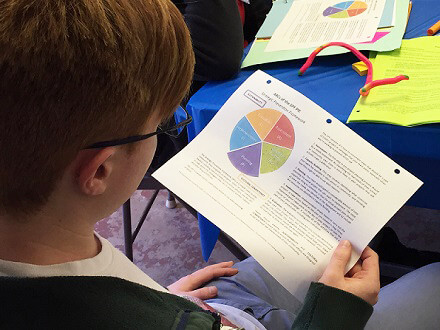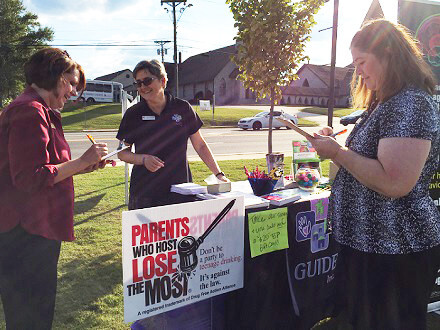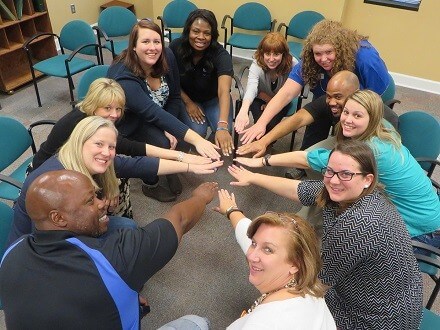Our Strategic Prevention Framework (SPF) Series blog posts are coming to a close, but we have enjoyed going through each step with you. We hope that it has been a fun learning experience and that you will be able to take this information and put it into action. Here’s a quick review of what we have covered so far before we move on to the last step: Evaluation.
 First, we discussed Assessment. This step is an important launching off point because it allows you to assess the needs and resources of your community in order to make informed decisions. To put it simply, data must drive your projects and programs for them to be successful!
First, we discussed Assessment. This step is an important launching off point because it allows you to assess the needs and resources of your community in order to make informed decisions. To put it simply, data must drive your projects and programs for them to be successful!
Next was Building Capacity, which involves looking over your assessment data then identifying the resources in your community that need to be mobilized and developing new resources to address the gaps!
Planning is the third step and is where you need to spend most of your time. During this process, it is recommended that you prioritize your community’s risk and protective factors, create a logic model, develop a comprehensive, data-driven plan and establish a work group that will support your project or program.
After extensive planning, you will put your strategies and activities into action during the step of Implementation, while also practicing fidelity and adapting your project as necessary.
Let’s not forget about the two overarching elements of the SPF, Sustainability and Cultural Competence, which are both integral to this process and should be involved in your project or program long before you reach the last step of evaluation.
 Now let’s take a look at the final step of the SPF process. The Substance Abuse and Mental Health Services Administration describes Evaluation as, “the systematic collection and analysis of information about program activities, characteristics, and outcomes to reduce uncertainty, improve effectiveness, and make decisions.” As evaluation is a crucial aspect of successful prevention, there are many ways to evaluate your projects and programs. Below are a few of the most common evaluation measures to get you started.
Now let’s take a look at the final step of the SPF process. The Substance Abuse and Mental Health Services Administration describes Evaluation as, “the systematic collection and analysis of information about program activities, characteristics, and outcomes to reduce uncertainty, improve effectiveness, and make decisions.” As evaluation is a crucial aspect of successful prevention, there are many ways to evaluate your projects and programs. Below are a few of the most common evaluation measures to get you started.
- Surveys are a useful tool to quickly evaluate your project or program. You can administer pre and post surveys to measure impact; utilizing post surveys alone will measure the success of an event, training or meeting. You can also use surveys to evaluate the status of a particular issue in your community, such as how many teens currently drink alcohol.
- Track your data in an excel spreadsheet to identify your project or program outcomes. This is relatively easy, and using this method can help you to compare results over time. You can’t collect too much data because you never know what trends you will find.
- Plot your data using maps or charts to visualize your results! This helps your results to be more tangible and allows you to make better decisions moving forward.
- Designate a time for a group debrief or focus group immediately after the conclusion of your project or program, or as soon as possible. Be sure to include the key people involved in coordination and implementation. One way to begin the debrief is to have the group engage in an exercise from Michael Brandwein called WIBYT, or “Write It Before You Talk.” Simply give the group a writing prompt, such as what went well and what could be done differently next time, and then give them a few minutes to write down their thoughts. This allows individuals to think critically and formulate unique ideas, therefore enabling them to contribute to the discussion that follows.
Regardless of the evaluation measure(s) you choose, upon completing this step, you should have insights into what was successful that you should sustain, how you can improve in the future and next steps that you can take. Also, don’t forget to share your results with your community partners and key stakeholders!
 To sum it up, evaluation is necessary for your prevention efforts. Following the SPF steps will bring greater success to any and all projects, whether you are just starting out in the prevention field, you’re a prevention expert or somewhere in between.
To sum it up, evaluation is necessary for your prevention efforts. Following the SPF steps will bring greater success to any and all projects, whether you are just starting out in the prevention field, you’re a prevention expert or somewhere in between.
While this process can seem overwhelming at times, don’t forget, you are not alone. Reach out to your community partners and key stakeholders; you will need them every step of the way. You can also reach out to your partners in the prevention field; they may have some answers or resources that you need. We are all here to help each other make a difference!
Thank you for following along on this journey through the SPF Series. We wish you much luck with all of your future prevention efforts!
